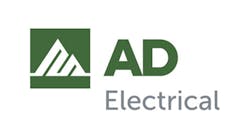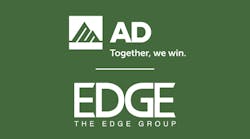By understanding contractors' product decision-making criteria, manufacturers and distributors can refine sales and marketing efforts to better serve contractor customers and capture incremental market share.
Insight into contractor buying behaviors is critical to both distributors' and manufacturers' sales and marketing efforts. Pertinent questions include:
-
What are the key brand drivers for contractors?
-
Why do contractors choose one brand over another?
-
What is important to contractors when choosing between different brands?
These questions hold significant importance to a distributor company as it aligns itself with leading manufacturers.
Recently, Channel Marketing Group conducted a study to better understand the role of “brand” in contractors' purchasing processes. The study was sponsored by Advance Transformer Co., Rosemont, Ill., but the sponsorship was never revealed during the study. There was no bias toward any manufacturer or product category. The findings are beneficial to all.
“We were intrigued by the idea of getting better information about our customers from our customers,” said Dave Levinson, vice president of marketing and product management for Advance Transformer. “Many of us have been in the industry a long time and think we know what the customer wants and thinks, but historically we haven't asked them. This research project gave us an opportunity to ask customers directly.”
METHODOLOGY
The study began with three focus groups of contractors of varying size and business focus from around the country. These focus groups provided the opportunity to ask contractors, “What is important to you when choosing between different brands?”
Based upon the input from the focus groups, several surveys were developed with the aim of gaining insight into decision drivers of two distinct groups of contractor decision makers:
-
Contractors who purchase products at the counter and
-
Management of larger contractor companies.
The first group, the counter buyers, typically consists of decision makers from smaller companies. They are often electricians visiting a counter to pick up materials for a specific job or to obtain last-minute items.
The second decision-maker group consists primarily of management personnel from larger contractor companies. They make purchasing decisions about which products to buy, but they do not personally visit distributor counters to pick up or purchase the product.
To cover the first group of decision-makers, a counter survey was conducted at distributor counters throughout the country. More than 1,000 responses were obtained.
To reach the second group, an e-survey was sent to approximately 6,000 management representatives of larger companies. The e-survey garnered a response rate of 9.5 percent.
Because these two groups are very distinct, different questions were asked of each audience at the suggestion of the focus-group participants.
WHAT SMALLER CONTRACTOR CUSTOMERS WANT
Counter surveys were conducted in 49 states with responses received from primarily electricians and owners of smaller companies.
The top five attributes, ranked in order of importance with the rating scale of 1 (not important) to 5 (very important) for this group of decision makers are:
- Ease of product installation (4.24)
- One-stop shopping (4.21)
- Ease of handling replacements (4.12)
- Convenience of location (4.11)
- Reputation of manufacturer (4.10)
Note that three of the five attributes are distributor-oriented, affirming the role of the service-oriented, conveniently located distributor as an aggregator of quality products.
According to respondents, manufacturers who understand contractors' needs for quality products designed to save them time (both during installation and in case replacement is needed), and manufacturers that communicate this message to the customers, receive purchase preference.
WHAT LARGER CONTRACTORS WANT
The e-survey attracted a different demographic of respondents than for the participants of the counter surveys; these respondents typically work for larger companies and have managerial responsibilities.
The top five attributes, ranked in order of importance with the rating scale of 1 (not important) to 5 (very important) for this group of decision makers are:
- Product quality (4.72)
- Availability at preferred distributor (4.65)
- Manufacturer reputation (4.53)
- Manufacturer warranty program (4.49)
- Familiarity with the brand (4.35)
For larger contractors and contractor management, product quality is crucial as are other manufacturer attributes such as warranty programs, reputation and familiarity with the brand or prior usage. Although purchase price is not as important as other attributes, competitive pricing is expected.
COMMUNICATING WITH THE CUSTOMER
Manufacturers communicate to end-users in a variety of ways. According to the respondents of the counter surveys, the top five ways of receiving information are:
- Distributor salespeople (36 percent)
- Trade magazines (14 percent)
- Referrals (13 percent)
- Counter days (10 percent)
- Manufacturer salespeople and manufacturer Web sites (9 percent)
To obtain brand preference and influence purchase behavior among smaller contractor companies, manufacturers should seek venues to present product to the end-user through the distributor, which is the key customer contact.
When it came to the preferred methods of obtaining product information, respondents to the e-survey expressed a preference for product information from a manufacturers' Web site. It seems many larger contractors and management personnel prefer this avenue due to the “on-demand” need and the breadth of information available on Web sites.
MARKETING IMPLICATIONS
Results of the study reaffirm much of the industry's perceptions of customer behavior; however, there are areas where manufacturers should reconsider their efforts:
-
Gaining end-user input regarding product and marketing/promotional development.
-
Identifying additional venues to communicate product awareness through distributors.
-
Broadening manufacturers' efforts to connect with end-users beyond sales calls; other communication media should be explored.
-
Recognizing the role of Web sites as informational tools will expand and that manufacturers should consider how they can support preferred local distributor Web sites as well as how to promote their Web site(s).
Manufacturers must get as close as possible to electrical contractors and other customers so they can understand customers' needs and buying behaviors. This will help manufacturers develop strategies to capitalize on customer desires to develop and maintain their competitive advantage.
For both manufacturers and distributors, the message was clear. To drive growth and profitability, effective marketing programs should start with quality products from leading manufacturers.
Customers desire the best. Strategies that differentiate a brand while integrating the best attributes of the manufacturer and the distributor are destined to succeed.
David Gordon is a principal of Channel Marketing Group Inc. He can be reached via e-mail at [email protected]. Victoria Levitan is manager, research and business intelligence for Advance Transformer Co., Rosemont, Ill.








